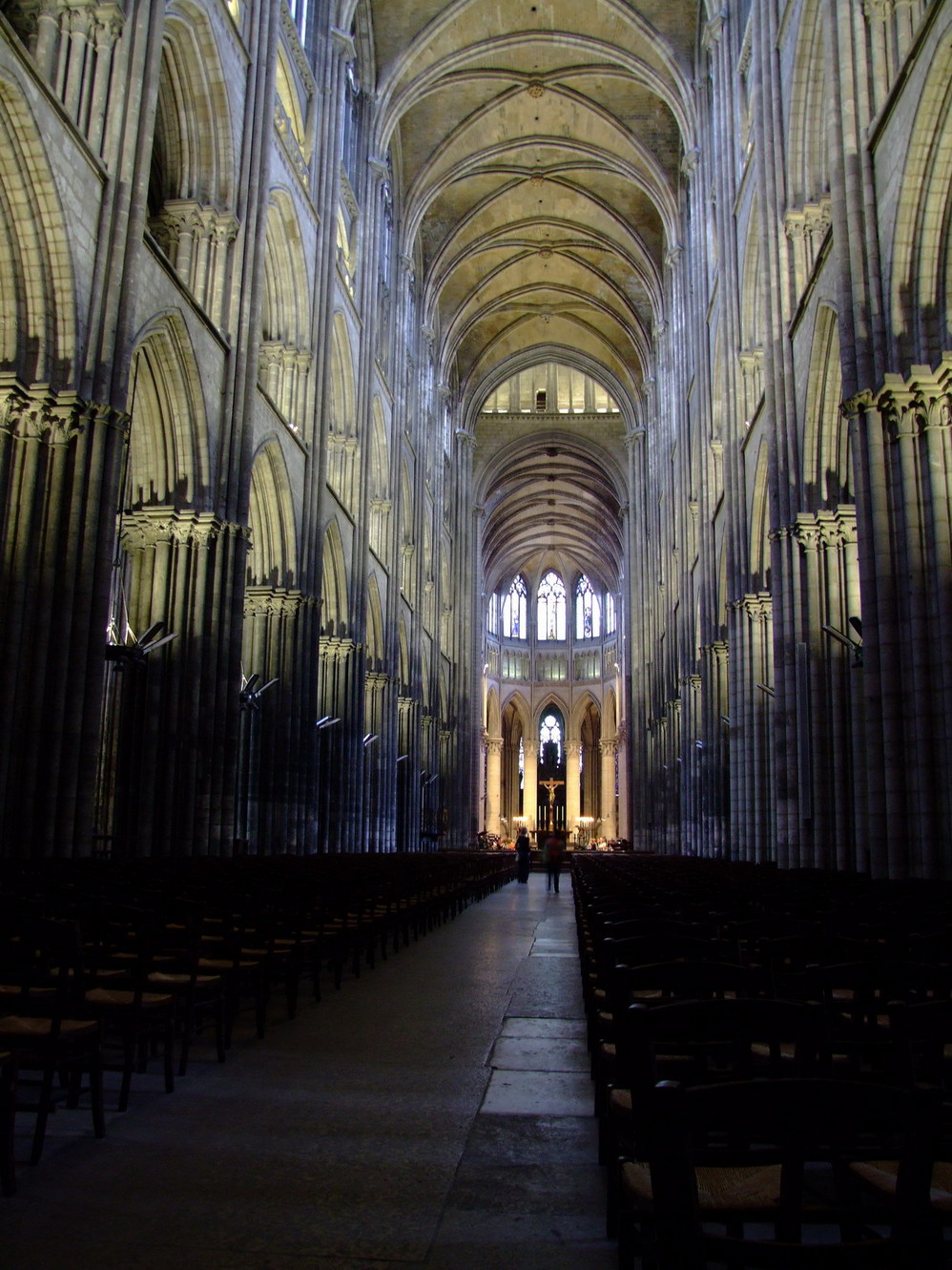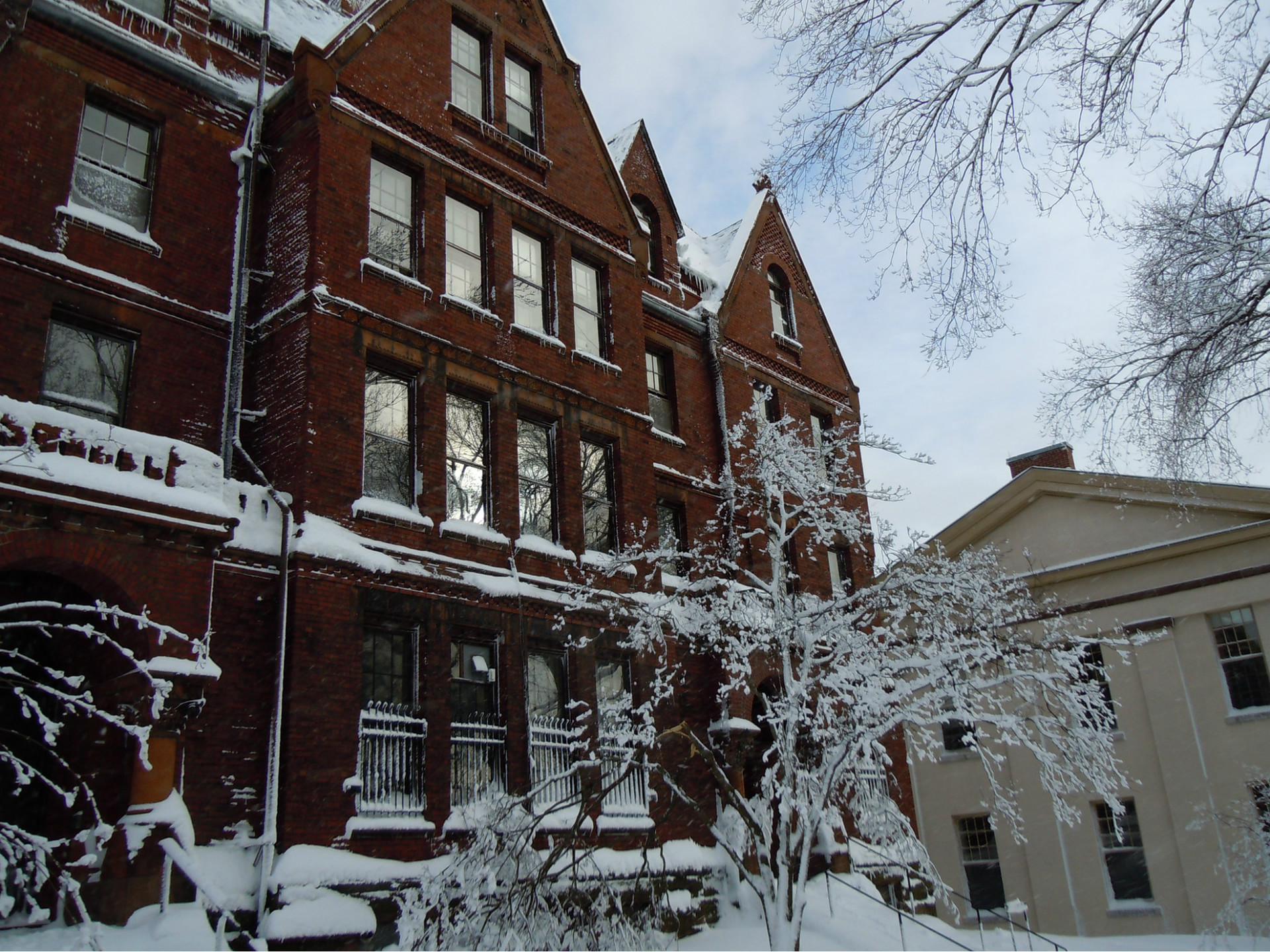eglise st-joseph
4A地址: 暂无
开放时间: 暂无

更多热门城市
景点印象
The Church of St Joseph is the fourth church to stand in the centre of Le Havre, and is deliberately very different from traditional churches. Many will not like the concrete tower style and Im guessing it must be one of the few churches in the world whose height is more than twice it's length.Auguste Perret, the mentor of Le Corbusier and the man called upon to rebuild Le Havre's shattered city after WWII, worked with Marguerite Huré on the beautiful windows which become lighter colours as the tower gets higher....the very top windows are white and clear. The effect is spectacular on sunny days, but still wonderful on grey, rainy days.The interior space (of 50,000 cubic metres!) is in the plan of a Greek cross and the entire congregation is visible to the priest because the altar is centrally located below the huge well of light in the tower.The tower is a memorial both to St Joseph but also to the thousands who died in and around the city in WWII.You'll either love it or hate it,
This cathedral was rebuilt after being destroyed in World War II. Its more modern architecture is a nice change after visiting many older cathedrals. The bell tower dominates the skyline and is visible from the harbor. Inside, I was interested to see that seating is all around the chapel, with the choir and chancel in the middle. And as noted in the title, the tower and its lights draws your gaze and thoughts upward. Worth a visit if in Le Havre.
Le Havre and Perret's architecture is an acquired taste, the town and church having been rebuilt after being destroyed in the war. Eglise St-Joseph is a stark structure from the outside that dominates the town. On entering (for free), the stained glass, light and dark shadows on plain concrete is quite remarkable. How can poured concrete be quite so spiritually moving? Make sure to see how the spiral stair case winds its way right to the very top.
This church stands proud in Le Havre and it was the prominent part of the skyline of the town viewed from the cruiseship. It did not let you down on inspection, as it looks very modern and occupies the centre of the town, within walking distance from all the other sights eg. indoor market. It was documented with pictures inside the church, that it was comprehensively rebuilt in Le Havre by the architect, Auguste Perret, of Belgium...aftyer the war. It was serene and quiet inside. It would have been great if we could get up the stairs to see the views. But we did not.
I love Churches and Cathedrals, but I have never seen anything like this one. The Spire can be seen from all over the City and when approaching by Ferry. When we went inside, this spire was in fact hollow and contained thousands of coloured windows - looks magical! It's all quite new finished in 1952 - in fact all of Le Havre is new as it was almost completely destroyed at the very End of the war. and the whole city has some amazing buildings and spaces
A fascinating Cathedral well worth a visit,venture inside to appreciate the semi glass steeple. Just a short stroll from the City Centre
We stopped over at Le Havre on a cruise trip. This is a modern concrete town, the whole design was around concrete and the designers love of this material for buildings. In the middle of this town is the most stunning tower. It can be seen from anywhere in the town. It is such a unique design for a church and when you walk into the church you notice that all the glass on each side of the building brings in different colours of light, depending on where the sun is. As we walked in you have really warm reds and purples coming in from one side, and oranges and yellows from the opposite. The effect in the building was beautiful. There is also a history on the building and re-building of Le Havre at the back of the church which is well worth a read. There is no entry fee to this church and it shouldn't be missed.
On par with the RC cathedral in Liverpool this is truly an amazing building, simple and stark in design with a beautiful stained window tower! gave a sense of being.
Just wandering around Le Havre, we couldn't help but see a very tall structure. We finally got close enough to it to see it was a modern steeple of a church. We went inside. Though somewhat modern, it is a very beautiful church with an amazing history. The original church was destroyed during world war 2; this structure was rebuilt between 1951 and 1961. The eight-sided tower that makes up the steeple has stained glass in 7 colors--orange, yellow, green, violet, red, green and white. The entrance to the church was wide open the day we were there--very welcoming. There were many pigeons at this entrance who somehow knew not to enter the church.
Visiting this church requires a little understanding of the recent history of Le Havre as it was designed from the same planner as the rest of the lower city. The building can already be seen from far away and serves, especially from the sea, as a point of orientation in a double sense.The combination of religious function and modern architecture is remarkable and invites the visitor to think about things from different perspectives. Even-though everything is built in steel-reinforced concrete it does not appear as "cold" or uninviting.A very good place to visit and spend some of your time to take a rest and see around. Also allow yourself a deeper look into the hows and whys of this architectonic and religious highlight of Le Havre.Enjoy the visit!
Le Havre suffered severly during the war, and the St Joseph Church is part of Perret's masterplan for the reconstruction. Weird from the outside, impressive from the inside, it is a unique construction and a must for admirerers of Perret's work.
This modern looking building is beautiful on the inside. Large thick concrete columns hold up large coloured glass windows.
The church is part of a comprehensive rebuild of Le Havre by the architect, Auguste Perret, he had a unique vision...Why the rebuild? The town and it’s inhabitants suffered terribly during WW2. Le Havre was still occupied some months after D-Day and strategically vital so the Allies agreed to a desperate plan; the unforgiving ‘Operation Astonia’.This rain of bombs upon Le Havre on 5 & 6 September was so extensive it became known as the storm of iron and fire. But just to make sure bombing continued for another three days.Le Havre was finally liberated on 12 September, at an appalling cost. Our before and now images of Le Havre, plus the full story here http://www.normandythenandnow.com/concrete-serenity-in-le-havre
Absolutely stunning monument. Do not hesitate to go inside and see how light the structure is, despite its outer appearance.
NIce chuch around 5 minutes walking from the Hotel Pasino Le Havre. It's impossible don't stop for a photo.


